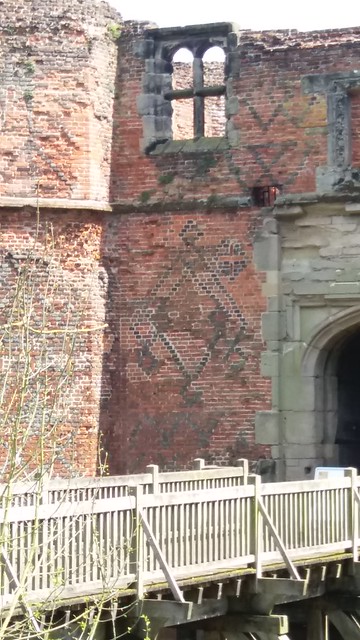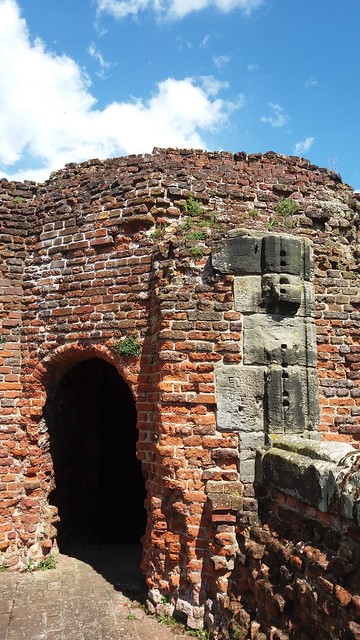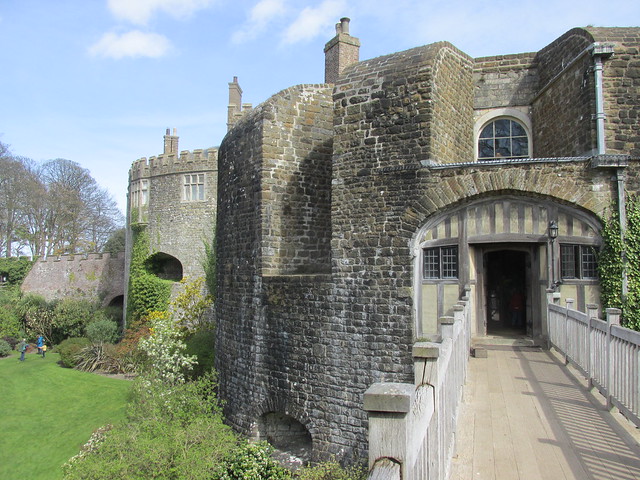William, Lord Hastings was a favourite of King Edward IV who made a small fortune during the Wars of the Roses and decided to spend it on a very impressive new house at Kirby Muxloe in Leicestershire. The village was the site of an existing manor house belonging to his family, who also owned nearby Ashby de la Zouch Castle.
Unfortunately William's fortunes changed when Richard, Duke of Gloucester - later Richard III - seized the throne and took a dislike to him. Richard had William's head chopped off, and work on the wonderful house stopped, with just one tower completed, in 1483.
 |
| Just one complete tower |
However, what remains of the castle shows what a magnificent structure it was going to be. Built in the wonderful new material - brick - which was the height of fashion and very expensive at that time. The never finished gatehouse is probably the most impressive part still remaining. It has ornate brick work and dark patterns built in to the rich red courses that symbolise William in happier times.
 |
| Decorated in darker brick |
A few technical terms: course means a horizontal row of bricks; diaper work is a pattern of bricks in a different colour from the main body, particularly in the form of a criss-cross design; bricks have short ends - headers - and long ends - stretchers; bond is the way in which headers and stretchers are mixed to create the overall pattern. Flemish bond has alternate headers and stretchers in a course, English bond has alternate courses of headers and stretchers. (More about bricks here)
 |
| Magnificent spiral stairs |
Kirby Muxloe is surrounded by a moat, and there were gun ports built into the gateway. There's no evidence that these were ever planned to be defensive structures, however. They might just have been for show, as a display of William's position and power.
Now off you go over to Tricky's FAST Blog to see other Fives this Friday!







